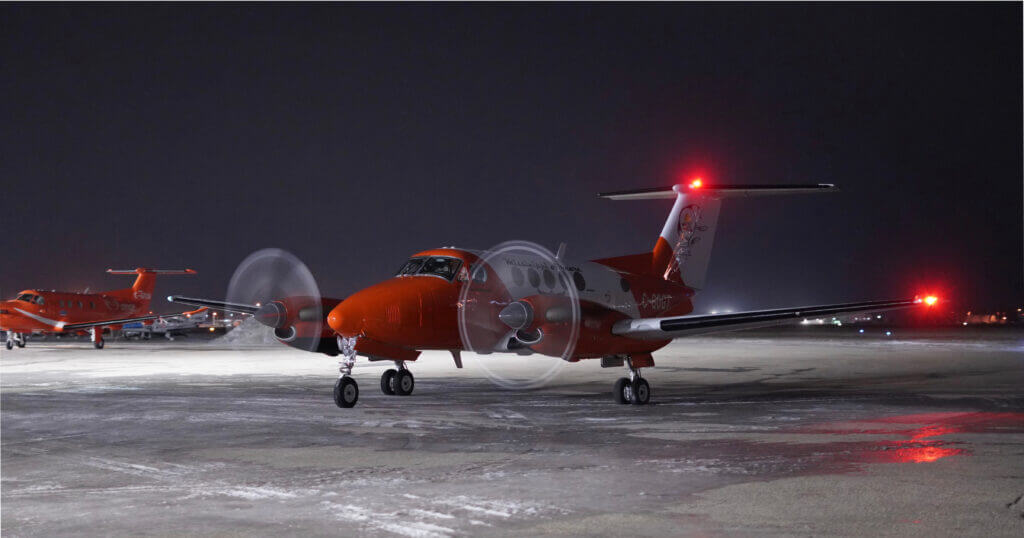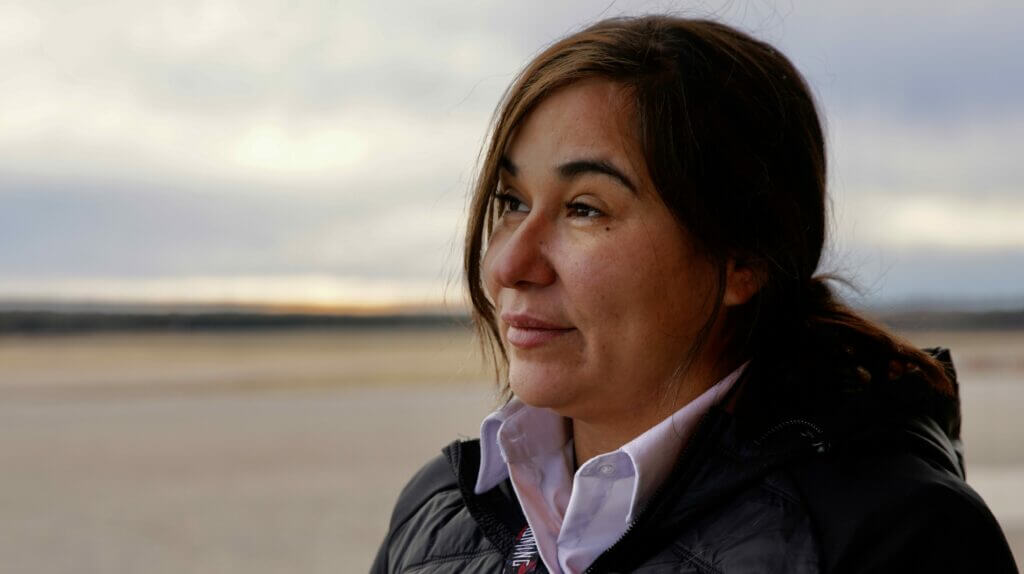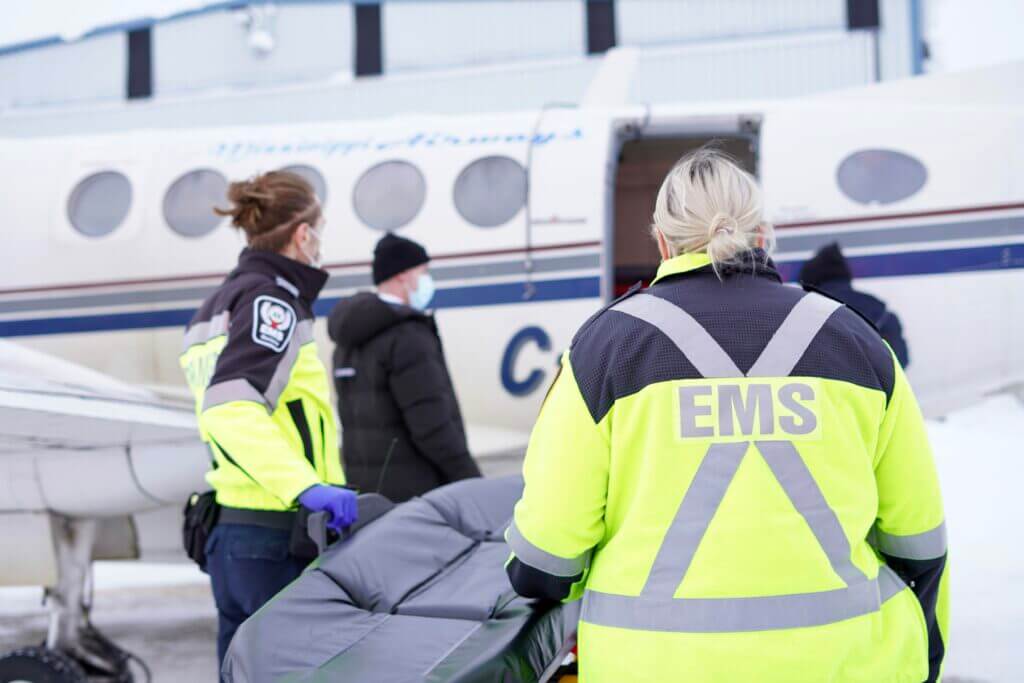Estimated reading time 11 minutes, 36 seconds.
A new 13-part series on APTN showcases the real-life heroes working at Missinippi Airways, an Indigenous-owned air operator that links remote northern Manitoba residents with critical medical care.
Making its English debut in mid-January, Northern Air Rescue chronicles the day-to-day operations of the air service in the face of extreme weather and logistical challenges.

Missinippi Airways, owned by the Mathias Colomb Cree Nation, flew 1,774 medical evacuation flights (medevacs) in 2023, using a fleet of six Beechcraft King Air 200s. In addition, the operator offers scheduled service between the Manitoba communities of The Pas and Pukatawagan, using a King Air 200 in commuter configuration, plus three Piper Navajos.
A Cree word meaning “big water,” Missinippi is headquartered in The Pas and has a presence in Winnipeg, St. Andrew’s, Thompson, Pukatawagan, and Norway House, Man.
“Our philosophy is safety first, customer service second, profit third,” explained general manager and pilot Rick Brenton. “We understand the demands and stress felt by people in isolated communities when they need to get out and get medical attention. We consider ourselves to be a medical company that happens to fly airplanes.”
Telling a story on the fly
Northern Air Rescue was shot over a two-year period and was created by the partners in Vancouver-based RealWorld Films, Carmen Henriquez and Denis Paquette.
“We did four trips [to Missinippi Airways],” recalled Henriquez. “We tried to see all the seasons in the North. The environment is just everything to the operations. The work they do there is gruelling and the lifestyle is hard.”
Henriquez and Paquette met in film school 20 years ago, and Northern Air Rescue is their fourth documentary series.

The idea for the show was born when Paquette read an article about Robyn Schlachetka and Raven Beardy, two Missinippi Airways pilots recognized in 2018 as Manitoba’s first Indigenous women medevac team.
“We work around Indigenous issues a lot; we wanted something fun and non-political,” explained Henriquez. “We wanted something inspiring for young people. So, we contacted the airline.”
The filmmakers – who had no prior aviation experience – originally wanted to showcase female pilots in the male-dominated aviation industry, but that focus expanded once they saw the important work being done by the Missinippi Airways team.
“Flying is such an important role that they play,” continued Henriquez. “It was cool to see how dedicated they are, including the team on the ground. It was important to understand the mechanics of how the airline works.”
Passengers often don’t see what happens behind the scenes at the airport, she noted.
“We observed such a human and weather-driven process. If the plough can’t clean the runway and there is a medevac coming in, what then? It was a different perspective to be on the ramp and see behind the scenes. It became an opportunity to get to know something we weren’t familiar with at all.”
The filmmakers quickly learned about life in the North, including how to dress for the cold. Often, they would find themselves waiting on a runway in -40C weather to record a medevac landing.
“We were constantly on the chase,” said Henriquez, adding that the RealWorld film crew included just three people: her, Paquette, and an additional cameraman. “We learned to change gears regularly just like the airline, to tell the story on the fly. They are constantly responding to the immediate.”

Missinippi Airways staged a couple of medevacs for the filmmakers, but the documentary crew was not permitted to shoot medical missions involving real patients. Still, Henriquez said the series clearly portrays the importance of aviation in the Canadian North.
“Aviation is a lifeline, it really is,” she said. “It is such a vital part of everyday life in the North. You think of Canada, the country, but you don’t think about how big it is until you are in the North and everything is so far… You have to cover huge distances, and there are no roads. It really is another world.”
Highlighting an essential service
Typically, Missinippi Airways flies within Manitoba, although charters can take crews as far afield as Nunavut or Ontario. Recently, the operation acquired its first jet aircraft, a Cessna Citation 550 that will perform charters and critical care patient movements. That jet should be online by May 2024.
Since he joined the operation 11 years ago, Brenton has seen significant growth – from just over 600 medevacs in 2013 to nearly three times as many in 2023. When he was approached by RealWorld Films, he liked the idea of featuring the operation and its 78 staff, although, “I’m not sure I liked the camera; I’m not used to that.”
He continued: “Our only caveat was that we weren’t going to over-dramatize it. I just wanted it to be about the people and the area, and what we do. Weather happens and sometimes you can’t get into a community, so there’s a lot of stress on the families there. I wanted people to be able to see the challenges that these communities face.”
Brenton is happy with the end result. He and his family settled down to watch the first episode of Northern Air Rescue on Jan. 14.

“It was kind of surreal to watch it at home,” he admitted. “The kids were quite proud and had some of their friends over. I don’t believe they knew what I actually do at work, because I don’t talk about work when I’m at home.”
He hopes the show will encourage young people, especially Indigenous youth, to opt for aviation careers.
Brenton also has a new respect for documentary filmmakers and how much work goes into making a series. “I’ve been in the industry for 35 years. This is the first time we’ve had an opportunity to showcase what we do in a respectful, factual manner. I’m very pleased with how it turned out.”
He also said he is glad the show highlights the challenges northern residents face when it comes to meeting basic needs, like medical care.
“I think the public needs to understand how much of an essential service this actually is,” he concluded. “It’s not a big percentage of our population that needs it, but it covers a massive territory. Winnipeg is the epicentre of care – but you can’t take a land ambulance from Thompson and drive for eight hours with a patient. So, it’s critical to understand the effort that goes into getting people where they need to be.”
Henriquez agreed. “We found a wealth of life in the North that is nourished by so many elements: culture, language, weather, being far away,” she said. “It was amazing to see the pilots engage in a cross-cultural endeavour, dealing with communities and Elders. We fell in love with aviation. Aviation is about communities.”
For more information on Northern Air Rescue, visit APTN.








